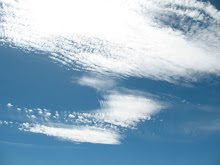"Keipper grabbed his camera just in time to capture a section of Kilimanjaro's massive Furtwängler Glacier spilling onto the same trail his group had ascended the very night before.
Keipper's photos speak for themselves, dramatic proof of a scientific near-certainty: Kilimanjaro's glaciers are disappearing. The ice fields Ernest Hemingway once described as "wide as all the world, great, high, and unbelievably white in the sun" have lost 82 percent of their ice since 1912—the year their full extent was first measured.
If current climatic conditions persist, the legendary glaciers, icing the peaks of Africa's highest summit for nearly 12,000 years, could be gone entirely by 2020.
"Just connect the dots," said Ohio State University geologist Lonnie Thompson. "If things remain as they have, in 15 years [Kilimanjaro's glaciers] will be gone."
The Heat Is On
When Thompson's reports of glacial recession on Kilimanjaro first emerged in 2002, the story was quickly picked up and trumpeted as another example of humans destroying nature. It's easy to see why: Ice fields in the tropics—Kilimanjaro lies about 220 miles (350 kilometers) south of the Equator—are particularly susceptible to climate change, and even the slightest temperature fluctuation can have devastating effects.
"There's a tendency for people to take this temperature increase and draw quick conclusions, which is a mistake," said Douglas R. Hardy, a climatologist at the University of Massachusetts in Amherst, who monitored Kilimanjaro's glaciers from mountaintop weather stations since 2000. "The real explanations are much more complex. Global warming plays a part, but a variety of factors are really involved."
According to Hardy, forest reduction in the areas surrounding Kilimanjaro, and not global warming, might be the strongest human influence on glacial recession. "Clearing for agriculture and forest fires—often caused by honey collectors trying to smoke bees out of their hives—have greatly reduced the surrounding forests," he says. The loss of foliage causes less moisture to be pumped into the atmosphere, leading to reduced cloud cover and precipitation and increased solar radiation and glacial evaporation.
Evidence of glacial recession on Kilimanjaro is often dated from 1912, but most scientists believe tropical glaciers began receding as early as the 1850s. Stefan L. Hastenrath, a professor of atmospheric studies at the University of Wisconsin, Madison, has found clues in local reports of a dramatic drop in East African lake levels after 1880. Lake evaporation indicates a decrease in precipitation and cloudiness around Kilimanjaro.
"Less cloud coverage lets more sunlight filter through and hit the glaciers," Hastenrath said. "That increase in sunlight then provides more energy for evaporation of the glacier."
http://news.nationalgeographic.com/news/2003/09/0923_030923_kilimanjaroglaciers.html

No comments:
Post a Comment